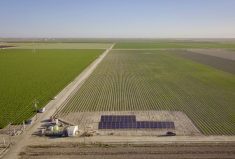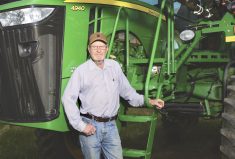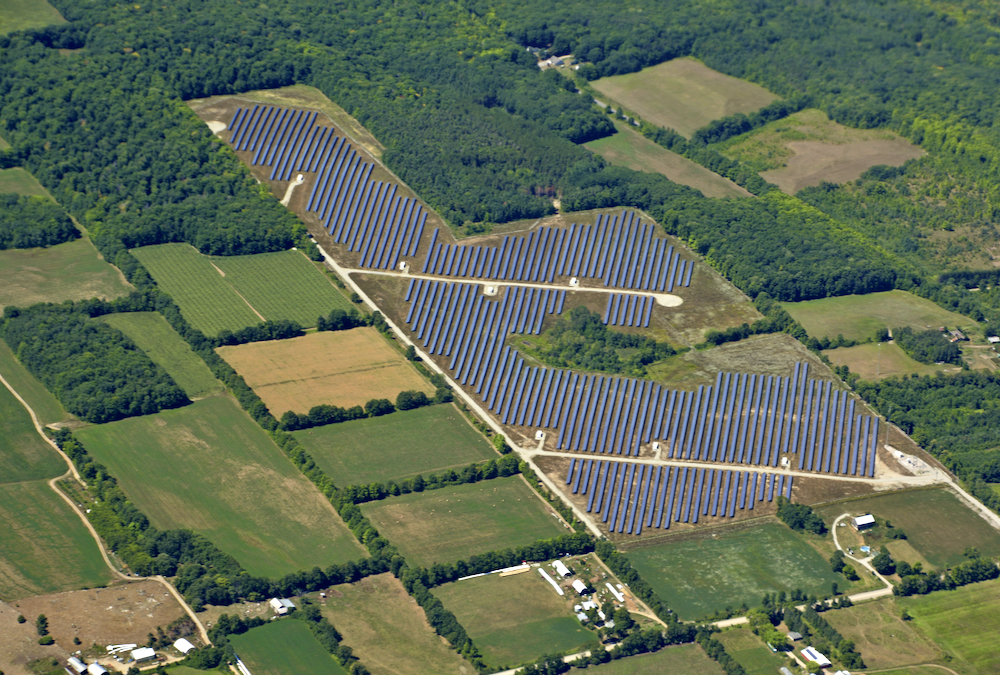In the last issue of Country Guide I made a case for solar power. I tried to show that economics of solar power are improving and that it is becoming a viable source of electricity. More importantly, I pointed out that society is demanding a switch away from fossil fuels, and that countries around the world are responding by investments in solar power. I called on farmers to consider alternative energy sources for their farms.
Unfortunately, the feedback to the story has been largely negative. I heard repeatedly that solar power is an inefficient white elephant. Rather than looking at what is now possible and what is being constructed today, readers repeatedly pointed to the failures and extravagant costs of some high profile and poorly designed solar projects from the past.
Read Also

The big squeeze: How to be fair to siblings during farm succession
Managing sibling business relationships on family farms.
And I was flatly told that solar energy will never power a farm.
So let’s take a look at Sundrop Farms.
In 2016 Sundrop Farms opened a 20-hectare complex of greenhouses near Port Augusta, Australia. While size alone makes this venture noteworthy, what really sets it apart is that the farm relies on solar power for its electricity requirements and for heating and cooling, and even for the desalination of sea water for all its water needs.
(Note: Sundrop declined a telephone interview with Country Guide while current expansion is underway, but answered questions by email and also supplied additional information on its present and future farms.)
Sundrop Farms utilizes 23,000 mirrors to focus sunlight on a 115-metre tower. At the focal point of this Concentrated Solar Plant (CSP), radiant energy heats water which is then used to heat the greenhouses in winter. The steam created in the tower also generates 39 MW of electricity for the farm operation and to pump cool sea water from Spencer Gulf five kms away. This sea water is used to cool the greenhouses in the summer, and one million litres of this seawater is desalinated daily to nourish the 180,000 hydroponically grown tomato plants in the greenhouses.
This closed-loop environmental system enables this single farm to produce 15,000 to 20,000 five-kg boxes of tomatoes daily (17,000 tonnes annually), which meets more than 15 per cent of Australia’s tomato demand.
While farmers are often credited as pioneers and early adopters of new technology, it was not farmers or even the ag industry that led to the creation of Sundrop Farms.
Sundrop Farms is the brainchild of German-born chairman and CEO Philipp Saumweber, a Harvard-educated former investment banker at Goldman Sachs.
About a decade ago, while employed as an investment professional with the hedge fund King Street Capital and as a director of his family’s Munich-based agricultural investment business, Saumweber Holdings, Saumweber recognized the need to grow food differently to meet the growth in global population. He sought to create a food production system which would meet three goals:
- Better for people: high quality produce, all year, in any climate.
- Better for the planet: circular, restorative processes using abundant renewable resources.
- Better for business: genuine long-term partnerships for profitable, predictable supply.
These three goals are the backbone of Sundrop Farms’ mission statement.
Saumweber assembled a team of young entrepreneurs and in 2010 built a pilot plant to test the feasibility of growing tomatoes using just sunlight and sea water in the dry, barren lands of South Australia. The success of the pilot plant led to construction of the current facility. Construction began in 2014 and the complex became fully operational last fall.

Sundrop Farms is a private, commercial farm operation. Much of the funding for this vast solar and greenhouse complex came from private investment and hedge funds looking to expand their agricultural portfolio. As a private company, financial details are unavailable. However, the total cost of the greenhouses and solar facility has been estimated around US$205 million.
Numerous news agencies, including Reuters, have reported that KKR, a global private equity firm invested US$100 million in the venture in 2014.
The key to acquiring this massive amount of funding was a groundbreaking long-term supply agreement with Coles Supermarkets in Australia. Coles will pay a fixed price for all the tomatoes Sundrop Farms produces for the next 10 years.
Such a deal was made possible by the fact Sundrop production is not seasonally affected, meaning Coles could be assured of regular supply throughout the year. Furthermore, since the closed-loop growing system ensures the tomatoes are consistently high quality and produced without the use of pesticides, the production system meets increasingly stringent consumer expectations for fresh and natural foods.
This deal was also possible because Sundrop Farms does not have the volatility of electrical, fuel, and water costs to contend with. Unlike most farms, Sundrop Farms controls most of its input costs, thereby enabling it to price its production at a profitable level 10 years out.
Most importantly, Sundrop Farms has minimized its requirements for fossil fuels and grid-supplied electricity, which are the major costs of competing, conventional greenhouses. (Sundrop Farms is still grid-connected in case of either a mechanical breakdown or a long stretch of inclement weather, which reduce electrical generations of the CSP. However, this connection is viewed more as an insurance expense to protect the millions of dollars of produce on the vines rather than as an operational expense.)
As a result, the 10-year contract is at a price that is competitive with conventionally grown tomatoes.
Perhaps the best way to judge the viability of this operation is the fact Sundrop Farms is already constructing a second farm in Portugal, while a third farm is in the planning stages in Tennessee.
However, these farms, and any future Sundrop fruit and vegetable ventures, will all have to meet the triple bottom line people, planet, and profits!
For an in-depth look at Sundrop Farms, go to www.sundropfarms.com.
Not only in Australia
There will be readers who will likely argue that what is happening in Australia, or even Portugal or Tennessee is not applicable to our northern climate. However, there are on-farm investments currently being made in renewable energy in Canada as well.
One of the most impressive is the two-megawatt solar PV system recently installed at the Green Acre Hutterite Colony, as reported by Green Energy Futures, a project which documents and reports on green energy projects in Canada.
Green Energy Futures’ Episode 124, entitled “Green Acres, the largest solar farm in Western Canada” by David Dodge and Dylan Thompson, tells the story of the innovative colony near Bassano, Alta., and their decision to purchase and install 7,600 solar panels to meet the electrical needs of their entire colony including the power-hungry plastic recycling business which they operate alongside the typical livestock and grain operations found on most colonies and farms.
The cost of this solar PV project was $4.8 million but the colony was able to debt finance the installation by showing banks the economics of generating their own solar power instead of purchasing electricity. At current electricity rates, the colony expects their investment to be fully paid back in 15 years.
Further information and a short video about this Alberta solar-powered farm operation can be found on the Green Energy Futures website by searching “Hutterite solar Western Canada.”
The problem is not with solar power, or any renewable energy source; it is with our definition of farming. No longer can we only look at farming as the mechanical production of fields of wheat or canola, or any other crop. Rather, farming must be economically, sustainably and viably producing a product the consumer wants. And that includes looking at reducing reliance on fossil fuels.
Farmers have always been front-runners in the production of renewable energy. Every farmer, whether grains or livestock or speciality crops, is in fact doing the same thing. We are harvesters of solar energy by turning sunshine into crops, fibre and fuel. So instead of looking at solar power as a fool’s errand, farmers need to see it as what it truly is, the most basic input of every farm.
It is only with this change in attitude that we can then start to look at other ways to utilize this resource on our farms. Because if we don’t, we will be left behind while the next generation of farms, like Sundrop Farms, is already embracing the technology of the future.
















